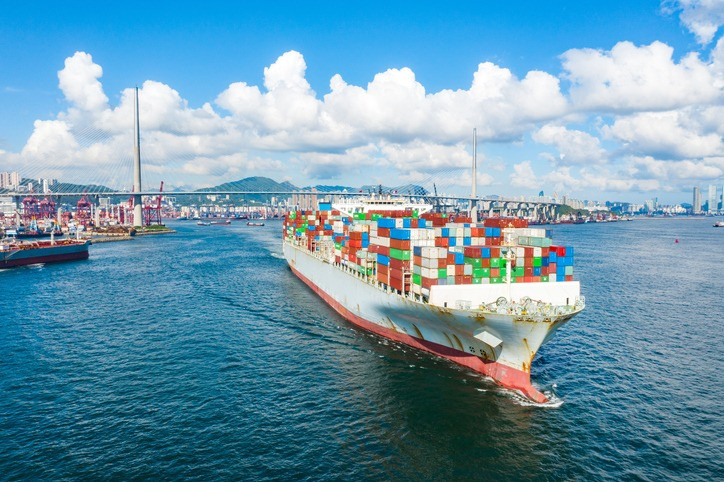La pandémie de Covid-19 a entraîné une désorganisation du transport maritime : ports encombrés, pénuries de conteneurs, la chaîne d’approvisionnement connaît de fortes perturbations. Les délais d’acheminement des marchandises se sont considérablement allongés, et les coûts ont augmenté, confrontant de nombreuses PME à d’importantes difficultés.
Des explications diverses à la désorganisation du transport maritime
Si les grandes compagnies maritimes et les différents acteurs du marché s’accordent pour désigner la pandémie de Covid-19 comme la principale responsable, les causes précises de la désorganisation du transport maritime ne font pas l’unanimité.
Les compagnies maritimes invoquent en premier lieu l’essor soudain de la consommation durant les premiers confinements instaurés un peu partout dans le monde. De nombreux services étant fermés, les ménages se sont rabattus sur l’achat de biens sur des plateformes d’e-commerce, notamment aux Etats-Unis.
À cette soudaine augmentation du volume des marchandises se sont ajoutées d’autres difficultés directement liées au virus SARS-Cov-2. Ainsi, la Chine appliquant une politique « zéro Covid », certains terminaux entiers ont parfois été fermés suite à seul cas positif détecté parmi les employés, ce qui a entraîné un encombrement des ports.
Mais pour les acteurs du marché, la désorganisation du transport maritime n’est pas seulement liée à la crise sanitaire. Comme la Fédération des entreprises portuaires privées et des terminaux européens (Feport), certains pointent du doigt le fonctionnement même de la chaîne logistique maritime, dénoncent les alliances formées entre les grandes compagnies et relativisent le fameux encombrement des ports, la durée moyenne des escales n’ayant, selon eux, que peu augmenté au plus fort de la crise.
Les PME cherchent des solutions durables
Quelles qu’en soient les causes précises, la désorganisation du transport maritime confronte les importateurs et les exportateurs à de grandes difficultés, notamment l’allongement considérable des délais et l’envolée des coûts. Les PME qui dépendent de l’import-export sont particulièrement impactées par ces perturbations, et tentent de trouver des solutions durables.
D’après l’organisation professionnelle Union TLF (Union des Entreprises Transport et Logistique de France), les coûts sont entre 6 et 10 fois supérieurs à leur niveau d’avant-pandémie, et cette augmentation s’est accompagnée d’une dégradation de la qualité du service.
Les PME essaient au maximum d’optimiser les conteneurs, en important des volumes plus importants, quitte à s’associer avec d’autres entreprises lorsque leurs capacités de vente ne sont pas suffisantes pour commander de plus grandes quantités.
Certaines entreprises se tournent, au moins partiellement, vers d’autres moyens de transport, notamment le transport ferroviaire. Mais là aussi, la chaîne d’approvisionnement est perturbée et il faut parfois faire face à des délais plus importants que prévu.
On observe également un phénomène de relocalisation d’une partie de la production des PME en Europe, même si, pour l’heure, il est encore difficile de rivaliser avec la rapidité de l’Asie, et notamment de la Chine.
Malgré ces aménagements, les PME sont pour la plupart contraintes, pour faire face à l’augmentation du coût du transport sans faire flamber les prix de vente, de réduire leurs marges. Les consommateurs voient tout de même les prix augmenter, la désorganisation du transport maritime étant en partie responsable de la progression de l’inflation.
Plus le temps passe, plus les entreprises se montrent pessimistes quant à un rapide retour à la normale. Pour beaucoup, les prix du transport maritime avant la crise, particulièrement bas, ne sont qu’un lointain souvenir.
Certaines améliorations sont tout de même à espérer : les grands armateurs investissent actuellement dans de nouveaux bateaux, et le numéro 3 mondial du transport de conteneurs, le français CMA CGM, a décidé en septembre dernier de geler certains de ses tarifs.
Divers acteurs du secteur de la logistique ont par ailleurs décidé de multiplier les démarches auprès de la Commission européenne pour que la situation change.
En effet, alors que Bruxelles surveille habituellement de près les questions de concurrence, le transport maritime continue être exempté des règles européennes en la matière. Si la Commission semble toujours miser sur une correction naturelle du marché, la situation devient de plus en plus complexe pour les PME et les TPE du Vieux Continent.
